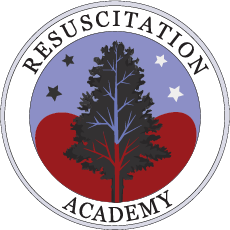Have your heart set on change: 10 ways to improve cardiac arrest survival rates
Around the world, the survival rate from cardiac arrest varies widely depending on where you live — and the statistics can be daunting. Research shows the survival rate in some communities is close to zero, while in others it’s over 50% for ventricular fibrillation (VF).
We can — and must — do better. To successfully fight this tremendous disparity, there are 10 actions you can apply in your community — some simple, some more complex — to help facilitate change and dramatically improve survival rates.
4 Simple Actions
Together, the below four actions (think of them as “the low-hanging fruit”) can create tremendous impact without requiring a great deal of time or financial resources to implement.
#1: Establish a cardiac arrest registry
How can we measure improvement if we’re not tracking results? This is the foundation for improving survival. It’s not just tallying whether a patient lives or dies, but all aspects related to care so you can gauge what’s working — and what’s not. Through continued measurement, you can correlate improvements with outcomes and identity ways to get even better.
#2: Implement telephone CPR with ongoing training and QI
Having protocols is one thing. Using them is completely different. A center whose culture supports dispatchers to confidently offer T-CPR instructions is primed to save lives. In King County, for example, there’s an ingrained expectation that “every call is a cardiac arrest until proven otherwise.” This mindset positions dispatchers to keep life-saving protocols top of mind.
#3: Implement high-performance CPR with ongoing training and QI
While the timing from collapse to onset of CPR is predictive of survival, recent studies suggest that the correlation between quality CPR and survival is also a critical factor. High-performance CPR is a measurable skill, which can be achieved with the right training and review processes. The better the CPR, the better your patient’s chances.
#4: Implement rapid dispatch
With rapid dispatch, the closest EMT vehicle can be en route within seconds of a 911 call. An expedited arrival allows EMTs to perform CPR and administer defibrillatory shocks before more valuable time is lost. Survival rate fall about 10% for every minute CPR and defibrillation are delayed. Thus, rapid dispatch can boost rates by 5-10%.
6 AMBITIOUS ACTIONS
A bit more challenging to attain, these next six actions depend largely on the culture, resources and knowledge of your community or organization.
#5: Record all attempted resuscitations
Recordings help you accurately reconstruct events as they occurred, piecing together the sequence and timing of events and helping to determine the reason behind any delays. Most current defibrillators allow the metrics of CPR to be automatically recorded, and digital voice recording is also available for most models. The key for any digital record of resuscitation is that it be used solely for feedback and quality improvement.
#6: Begin a program in police defibrillation
The more people trained to perform CPR and use an AED, the greater the effect. Some communities that have embraced police defibrillation have seen improvements in patient survival rates. Success hinges on total buy-in from your police department and dispatch centers at all levels, support from fire and EMS, and sufficient training, both initial and ongoing.
#7: Use smart technologies to extend CPR and AED use
Placing AEDs in public locations — think health clubs, community and senior centers, shopping malls and airports — increases the potential to save more lives. One means to insure a response is through smartphone apps and location technology (both to activate volunteer CPR responders and to locate AEDs). This technology is evolving rapidly and is likely to play an increasing role in resuscitations.
#8: Mandatory CPR and AED training in schools and communities
Over half of U.S. states require CPR/AED training in high schools; many public agencies also require CPR and AED awareness. The more people trained, the higher the likelihood that lifesaving interventions can occur prior to the arrival of EMS personnel.
#9: Strive for accountability
Accountability means transparency of performance to the public, to elected officials, to leadership, and to all the EMS personnel within an organization. Particularly useful is to compare performance with peer agencies. Key questions: How are we doing? And can we do better?
#10: Work toward a culture of excellence
This may be the most challenging action of all. To support a culture steeped in excellence, leaders must agree on a vision and standard of care, and provide the necessary training and continuing education to ensure ongoing quality improvement. When motivated individuals work together for change, there’s no limit to their potential.
A Game Plan for Survival
While it may not be easy to incorporate these 10 actions into your community, change starts with a desire to make things happen — and that starts with you. Choose one program that can best be achieved within your community, and once you see a change, you’ll create the momentum for tackling more. No matter which you choose, you’ll be on the right path to increasing the chance of life after cardiac arrest.
To learn more about these programs and how to implement them, download the 10 Steps for Improving Survival from Sudden Cardiac Arrest PDF.
The Resuscitation Academy











There are opportunities to significantly increase survival from out of hospital cardiac arrest. Implementation of existing standards and training programs for telephone CPR and high-performance CPR will do much to improve survival.